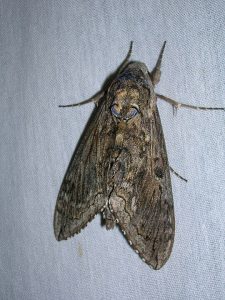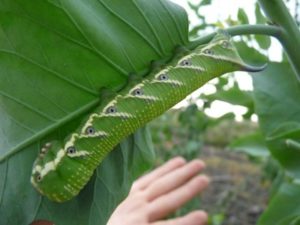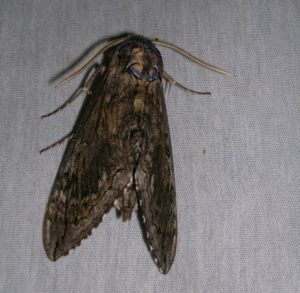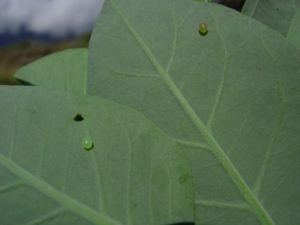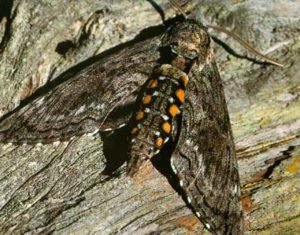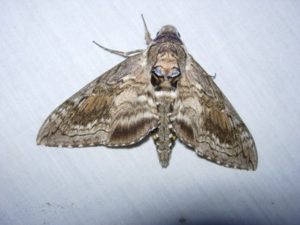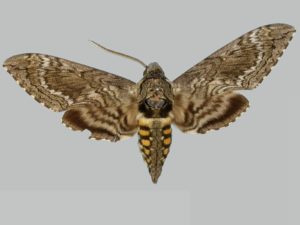Blackburn’s Sphinx Moth (Manduca blackburni)
The Blackburn’s hawk moth is a hawk moth found exclusively in Hawaii. This moth was once spread out all over Hawaii but now is just limited to three islands, namely the Big Island, Kahoolawe, and Maui.
It became the first Hawaiian moth to receive an endangered status in 2000 by the United States Fish and Wildlife Service.
Scientific Classification
- Family: Sphingidae
- Genus: Manduca
- Scientific Name: Manduca blackburni
Description and Identification
Pupa
Once they mature, the larvae begin pupation that happens underground. Upon maturation as an adult moth, it comes up to the surface,
Adult Moth
Sexual Dimorphism: Present but not prominent.
Color and Appearance
Their bodies are thick, spindle-shaped, tapering at both the ends. They even have ten orange spots on their abdomen, five on each side.
When the wings are opened, they are grayish-brown with black bands across the edges of the hindwings. When the wings are closed, the patterns and colors remain unchanged, though the black bands are barely visible.
Average wingspan: 12 cm
Flight pattern: Erratic
Season: Year-round
Quick Facts
| Other names | Hawaiian tomato hornworm, Hawaiian tobacco hornworm |
| Distribution | Hawaii, mainly the Big Island, Kahoʻolawe, and Maui. |
| Habitat | Coastal, dry, and lowland forests |
| Lifespan of Adults | 10-30 days |
| Host Plants | Primarily nightshade; also eggplant, jimson weed, tobacco, tomato, and tree tobacco. |
| Adult Diet | Nectar from plants like koali ʻawa and maiapilo |
Did You Know
- It shares a close physical resemblance and relation to the tomato hornworm.
- English entomologist Arthur Gardiner Butler first described this species in 1880.
Scientific Classification
- Family: Sphingidae
- Genus: Manduca
- Scientific Name: Manduca blackburni

